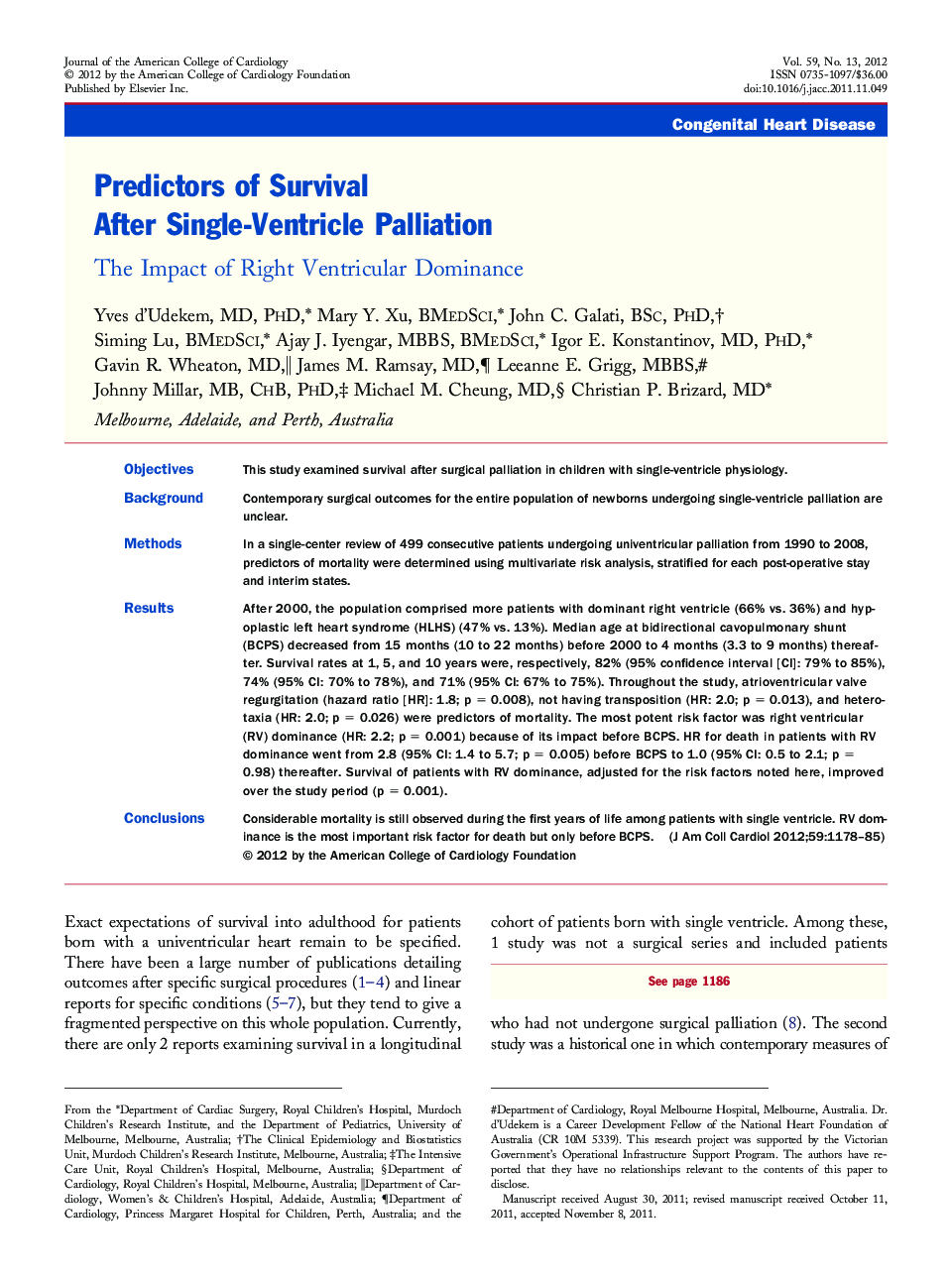| Article ID | Journal | Published Year | Pages | File Type |
|---|---|---|---|---|
| 2947222 | Journal of the American College of Cardiology | 2012 | 8 Pages |
ObjectivesThis study examined survival after surgical palliation in children with single-ventricle physiology.BackgroundContemporary surgical outcomes for the entire population of newborns undergoing single-ventricle palliation are unclear.MethodsIn a single-center review of 499 consecutive patients undergoing univentricular palliation from 1990 to 2008, predictors of mortality were determined using multivariate risk analysis, stratified for each post-operative stay and interim states.ResultsAfter 2000, the population comprised more patients with dominant right ventricle (66% vs. 36%) and hypoplastic left heart syndrome (HLHS) (47% vs. 13%). Median age at bidirectional cavopulmonary shunt (BCPS) decreased from 15 months (10 to 22 months) before 2000 to 4 months (3.3 to 9 months) thereafter. Survival rates at 1, 5, and 10 years were, respectively, 82% (95% confidence interval [CI]: 79% to 85%), 74% (95% CI: 70% to 78%), and 71% (95% CI: 67% to 75%). Throughout the study, atrioventricular valve regurgitation (hazard ratio [HR]: 1.8; p = 0.008), not having transposition (HR: 2.0; p = 0.013), and heterotaxia (HR: 2.0; p = 0.026) were predictors of mortality. The most potent risk factor was right ventricular (RV) dominance (HR: 2.2; p = 0.001) because of its impact before BCPS. HR for death in patients with RV dominance went from 2.8 (95% CI: 1.4 to 5.7; p = 0.005) before BCPS to 1.0 (95% CI: 0.5 to 2.1; p = 0.98) thereafter. Survival of patients with RV dominance, adjusted for the risk factors noted here, improved over the study period (p = 0.001).ConclusionsConsiderable mortality is still observed during the first years of life among patients with single ventricle. RV dominance is the most important risk factor for death but only before BCPS.
